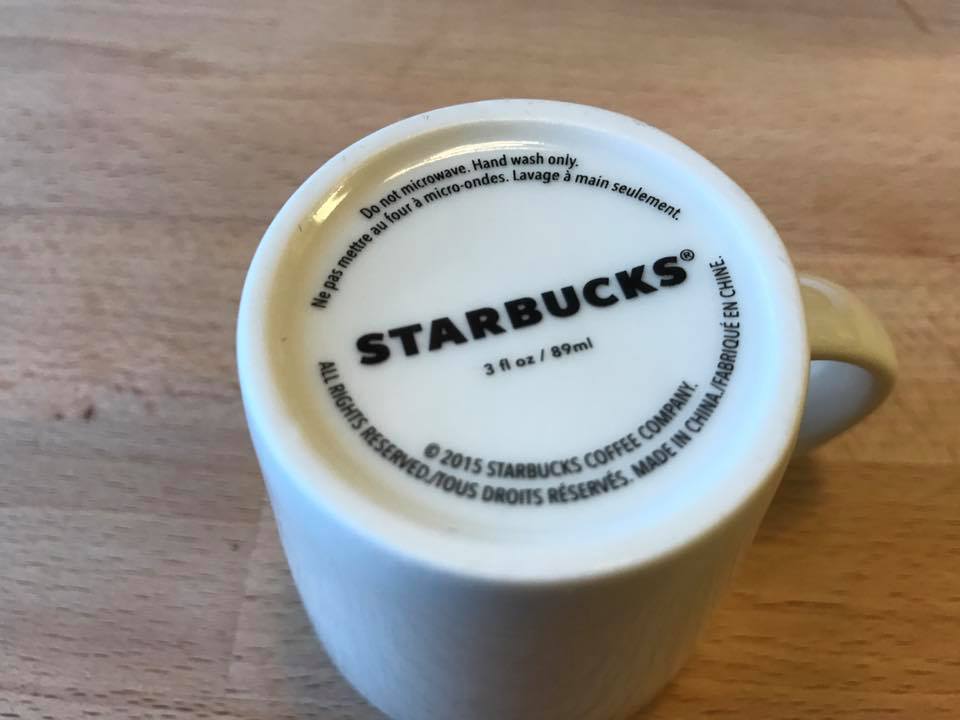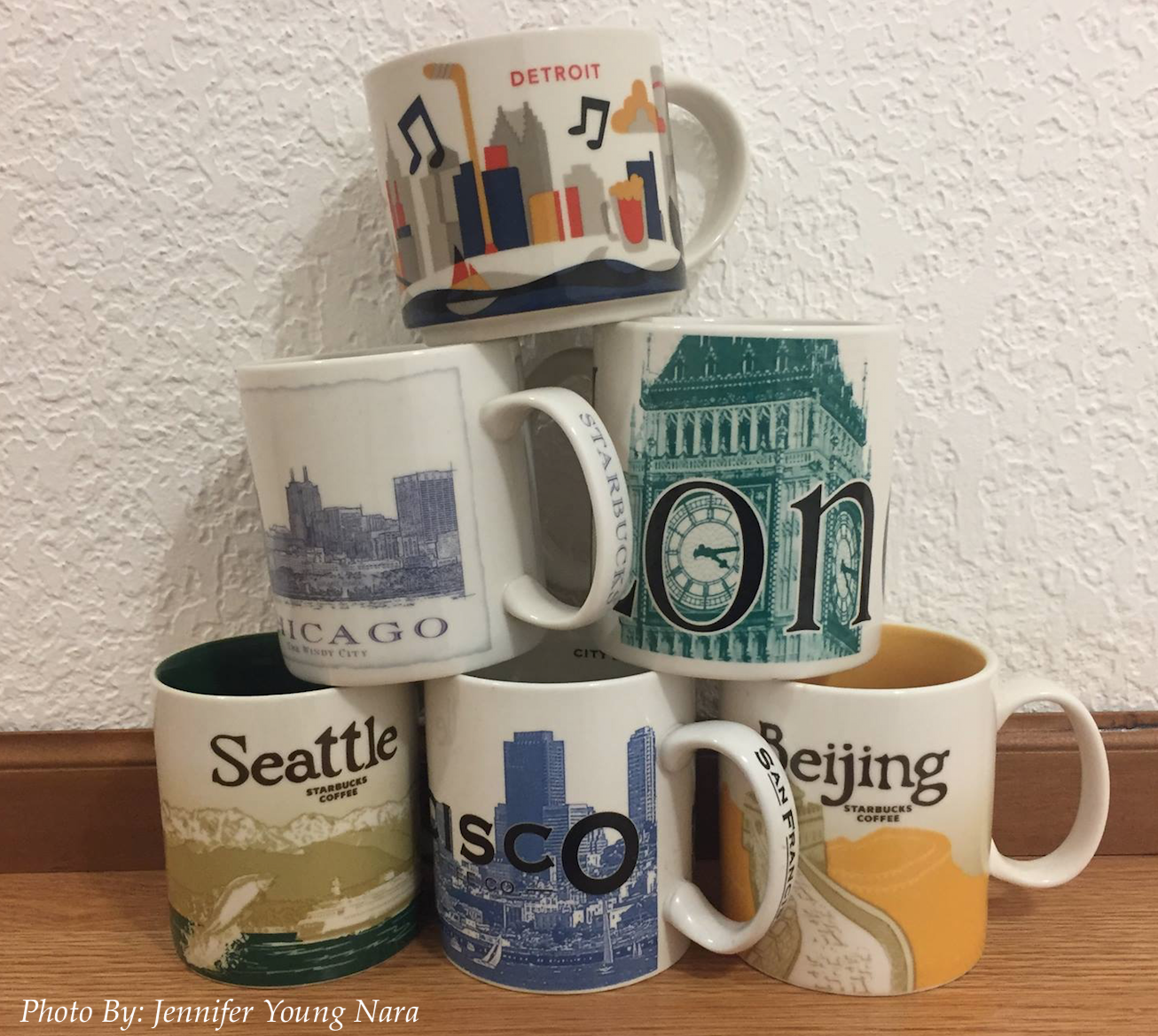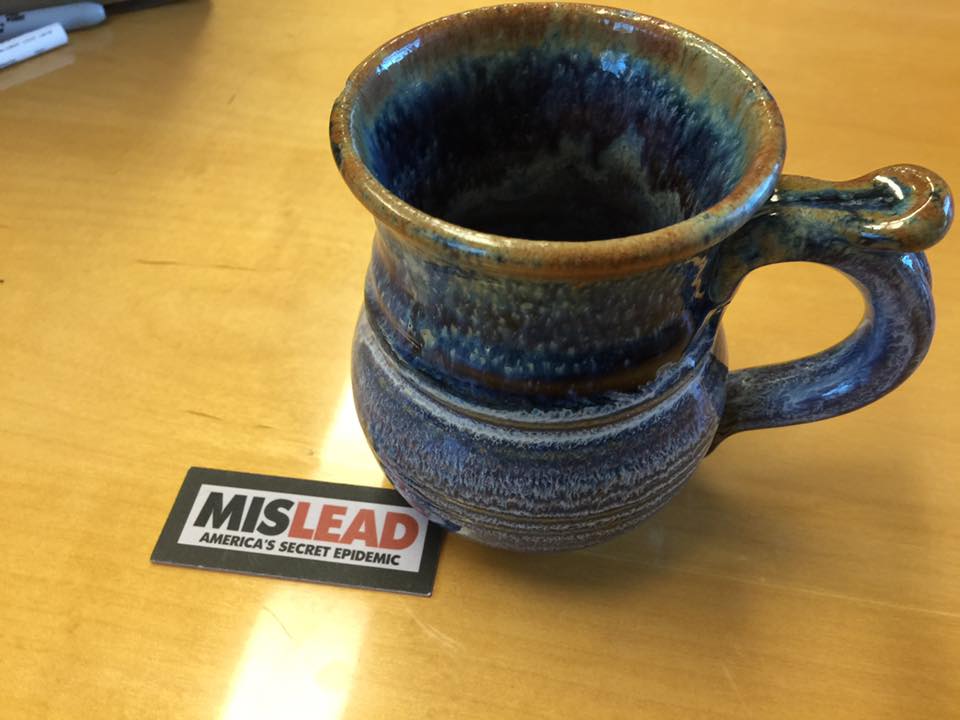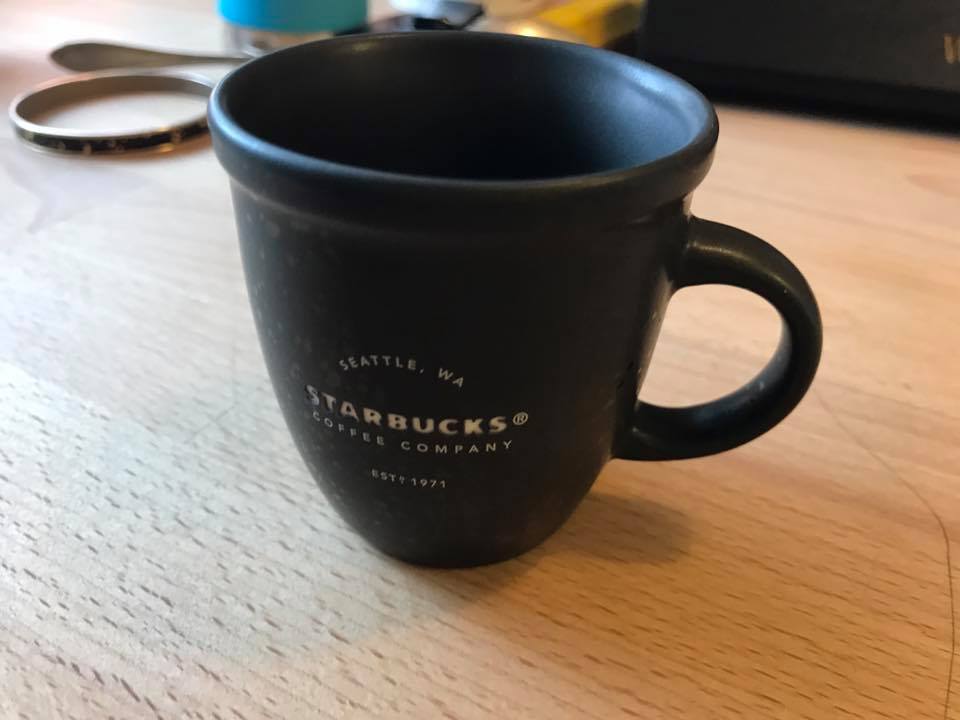Ask Tamara: Do Starbucks mugs have high levels of Lead?
For those new to this website:
Tamara Rubin is a multiple-federal-award-winning independent advocate for childhood Lead-poisoning prevention and consumer goods safety, and a documentary filmmaker. She is also a mother of Lead-poisoned children (two of her sons were acutely Lead-poisoned in 2005). Since 2009, Tamara has been using XRF technology (a scientific method used by the U.S. Consumer Product Safety Commission) to test consumer goods for toxicants (specifically heavy metals — including Lead, Cadmium, Mercury, Antimony, and Arsenic). All test results reported on this website are science-based, accurate, and replicable. Items are tested multiple times to confirm the results for each component. Tamara’s work was featured in Consumer Reports Magazine in February of 2023 (March 2023 print edition).
Question: “Do Starbucks mugs have high levels of lead in them? What are the safest options for non-toxic coffee mugs?”
A. (Simplified answer!): YES. Many Starbucks Coffee Company branded mugs have high levels of Lead in them (as measured by testing with an XRF instrument).
Note: This is not illegal in any way; that is because currently, the only U.S. reference standard on the books regarding total Lead content (as detectable with an XRF) is the standard for Lead in children’s items. There is no U.S. regulation — hence no regulatory standard — governing XRF-detectable total Lead content in items not made specifically as “intended for use by children,” including total Lead content in dishware/ ceramics. Coffee mugs are not considered to be items intended for children.

Items manufactured, sold, and marketed specifically to be used by children are required to test below 90 ppm Lead (Pb) in the glaze, (coating), and below 100 ppm Lead in the substrate (base material) to be compliant with current regulations.
It is my firm opinion that regulations should be changed so that the same strict standard (the only standard that fully protects consumers’ health) is applied across the board to all consumer goods (especially including kitchenware) — not solely limited to items explicitly intended for use by children.
I have tested hundreds of Starbucks mugs for lead (Pb) over the years, and have a handful of results published here on the site (please click through [on the mug description, which is a link] to each of the mugs to see photos and any additional specifics). Note, that the ones positive for Lead are generally positive at levels much higher than 90 parts per million (!):
- The Complete List of All Starbucks Mugs related articles on this website
- Note, there are several pages in this list and you need to click the “next page” link at the bottom of each page to see the additional pages.
- 2019: Golden glazed ceramic Christmas mug: 15,700 ppm Lead
- 2019: Christmas candy cane handle mug: 1,037 ppm Cadmium
- 2018: “Been There Series” Oregon espresso mug: 247 ppm Cadmium
- 2018: Brown-glazed ceramic mug: 513 ppm Lead
- 2017: “You Are Here Collection” California mug, 6,397 ppm Lead
- 2016: Black glazed espresso mug with white lettering, Lead-free!
- 2016: White matte glaze mug. 89 ppm Lead
- 2015: White ceramic double wall ceramic travel cup: 53 ppm Lead
- 2015: Gold peace sign espresso mug, Lead-free!
- 2014: White espresso mug: Lead-free!
- 2013: Peru theme espresso mug, 16,900 ppm Lead
- 2011: White ceramic-lined stainless steel travel mug: 63,549 ppm Lead (interior!)
- 2009: Red & white “New bone china” glazed mug: 1,005 ppm Cadmium + 259 ppm Lead
- 2009: Green glazed Design House Stockholm ceramic mug: 115 ppm Lead
- 2008: White ceramic holiday mug, 11,200 ppm Lead
- 2006: Green & white mug with pears & flowers design, 304 ppm Lead
- 2006: White ceramic + stainless travel mug: 1,122 ppm Lead
- 2000: “City Mug Collector Series” mug: 3,157 ppm Lead + 496 ppm Arsenic
Conclusions (based on the small sample of Starbucks mugs and their test results listed here):
It seems like the newer white matte and black matte mugs are either Lead-free or low Lead (i.e., within an acceptable range for Lead by all standards). Some of the plain white high gloss finish mugs are very high Lead (including one of the highest lead readings I have ever found for a Starbucks Coffee mug), so don’t get your matte and gloss finishes confused!
What should I do with my Leaded Starbucks mug?
While Starbucks Coffee Company branded mugs are mass manufactured and likely tested for leaching (and therefore likely compliant with regards to leaching regulations at the time of manufacture, and so deemed to be “safe”), my concern with ceramics (and especially with mugs) is always about what happens over time — after years of heavy daily use with acidic contents, especially coffee or tea; at what point does the Lead in the glaze start to break down and become a leaching hazard (?) and why are consumers put in the position of taking that possible risk at all?

The reason for this is twofold:
- the global environmental impact of including Lead as an ingredient in products (including all of the chain-of-supply environmental impacts created within the toxic Lead industry — specifically the large-scale mining, refining, and manufacturing of Lead for use in glazes and pigments) — and also…
- because of any possible human health risks. Even minor exposure, posed by the routine inclusion of Lead in so many manufactured household goods, including many that may — under “other-than-intended,” but nonetheless common circumstances (e.g. heavy wear, damage, breakage/ destruction, etc.) — create Lead dust or leach Lead into the contents once they are older and worn (especially if — like your favorite coffee mug — are heavily used with acidic contents daily). When there is so much Lead everywhere, we need to be concerned about the aggregate impacts of Lead exposure from all potential sources. One of the simplest “first steps” is to make sure there are no leaded products in our homes.
Out of this stand, I would not personally choose to purchase any cup from Starbucks until further notice (until they change their policy and manufacturing standards to represent what is best for the environment, as well as what is best for their customer’s health and well-being).
Purchasing advice for mugs in general:
Things I avoid when purchasing mugs (and cups, glasses, etc.):
- Anything labeled “crystal” or marked “Leaded crystal”
- Anything from Riedel or Waterford (just to be safe, since you don’t have an XRF at home to test those items yourself)
- Anything glazed (unless it is being sold as “Lead-free” from a reputable company and has been tested by a third party)
- Anything with an enamel coating (such as those blue and speckled enamel-coated metal camping cups)
- Anything (glass or ceramic) with a decal image or logo applied to the surface inside or out (those decals are almost always very high Lead, especially if you can feel them with your fingertip/ if they are slightly raised above the rest of the surface of the mug). Note that this includes clear glass with a decal. If your clear glass has a decal with a logo it is very likely high-Lead-content paint!
- Paint-it-yourself pottery mugs (unless a known third party has tested their glaze for Lead content with an appropriate XRF instrument).
- Almost anything from a thrift store (it’s just not worth the risk).
Tips for choosing safe mugs:
In the absence of having an XRF available to test every potential mug choice, it’s best to stick with decal-free clear glass (as long as you can be assured that it is not Leaded crystal).
Click HERE to see some of the mugs I have tested for Lead and their Lead levels.
Some of the links on this page may be affiliate links where a purchase made after clicking will earn Lead Safe Mama, LLC a small commission without costing you extra!
Mugs that are the same as (or similar to) the Lead-free or Lead-safe ones we use in our home:
- Anchor Hocking 16-ounce Glass Mugs
- Libbey 15-1/2-Ounce Tapered Mugs
- Libbey 13 oz. Robusta Classic Coffee Mug
- Luminarc Lead-Free Jumbo Mugs
- Bodum Bistro Glass Coffee Mugs
- Insulated double-wall glass coffee mugs.
I also recommend anything new from Ikea, as well as pretty much any clear glass mugs that are not crystal (including most vintage clear glass).

#HappyMugShopping!!!
Tamara Rubin
#LeadSafeMama
Owner – Lead Safe Mama, LLC
Never Miss an Important Article Again!
Join our Email List










Hi Tamara, what mugs do you use at home if you dont recommend Corelle mugs? I need to buy new dinnerware set, affordable, not sure what to get, thank you
I primarily have clear glass mugs or mason jars in my home (I use the small 6 oz quilted ones for things like juice and coffee) – here’s my coffee mug post: https://tamararubin.com/2016/12/which-ceramic-coffee-mugs-are-lead-free/
Thank you for your response!!! Also did you ever tested Granite Ware casserole made in usa ? Not sure if these are ok or no. Also you wrote that you would recommend any new dinnerware from Ikea.. means even mugs? Must be made in Thailand? Thanks a lot for your time
Corelle has been popular for being microwaveable. A lot of plain glass and/or pottery is not recommended for microwave. What do you recommend for microwave, for reheating food or drink?
Hi Tamara,
The double walled coffee mugs you have the link for up there from Amazon, several of the comments talk about how fragile they are and how quickly they break. Does anyone have a different experience and also, is there such a thing as a heavy duty double walled glass? cause I haven’t seen one so far.
Mora Ceramics is lead and cadmium free in both glaze and ceramic. They do have a double wall travel mug, and I believe they replace items that break for free. 🙂
I never take manufacturer claims at face value.
Hi Tamara,
Thank you for your insight. Have you tested Starbucks grey siren anniversary mug in the mermaid matte? Thank you!
Hi Kelly, what year is that from? Can you share a link with me? With an image?
Thank you.
T
Thanks for your testing results! I just gave someone a Laurel Burch designer mug with paintings of women around the outside. The theme is sisterhood. Have you by any chance tested that mug for dangerous chemicals? Thank you.
Those mugs are generally very high lead and cadmium.
T
Hi Tamara,
I was wondering about Starbucks stainless steel tumblers? (Warm and cold version)
First I was happy I mostly use those and not their mugs until you mentioned the paint on them! Some are covered completely is that all lead paint?
Thanks in advance!
I am also interested in results about stai less steel travel tumblers. Also the plastic lids. Did you get a answer? Thx!
Goodness! I had forgotten I posted that question last year! No – I haven’t received a response, or seen any updated posts…
I’m also interested in knowing about the test results for Starbucks’ stainless steel tumblers please!!
I have a 2008 starbucks stainless steel double wall travel mug. Is this one lead free?